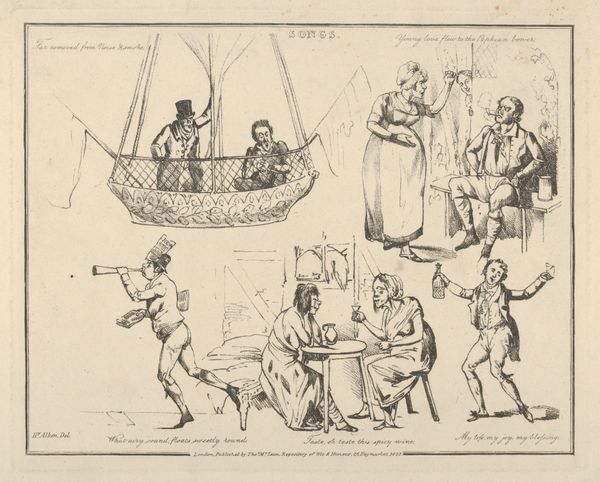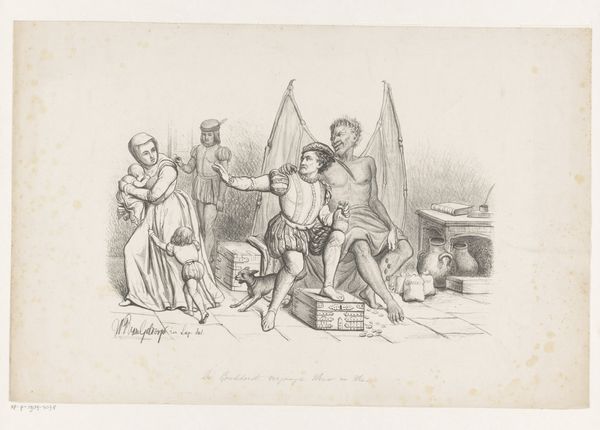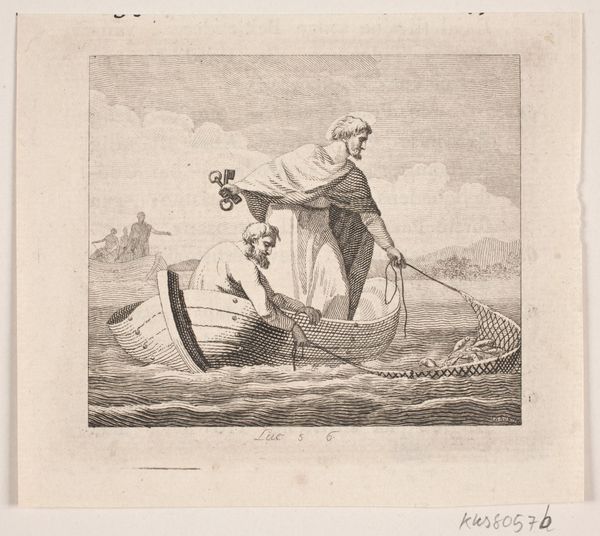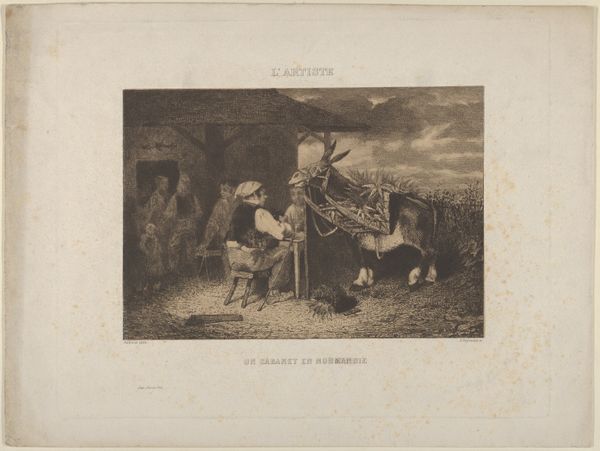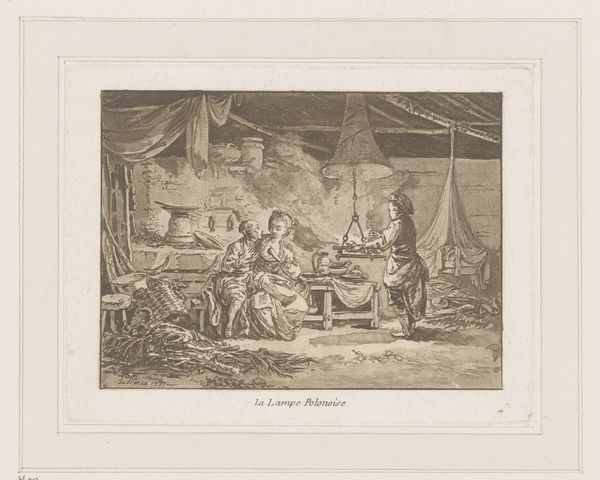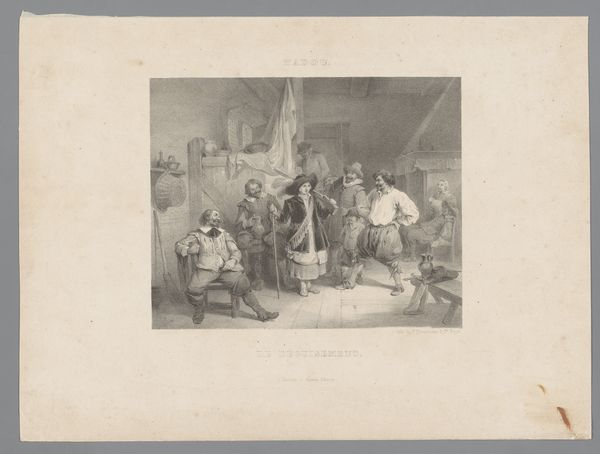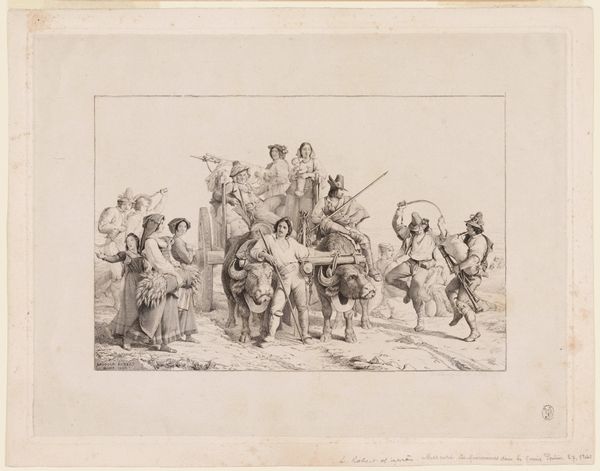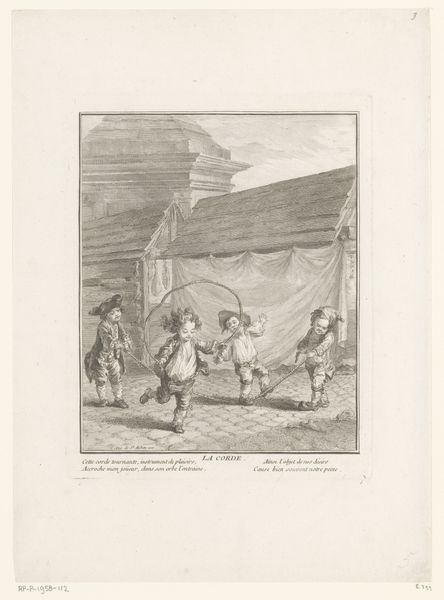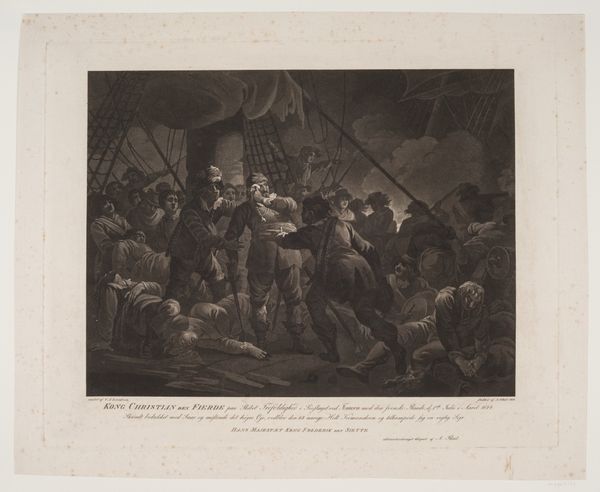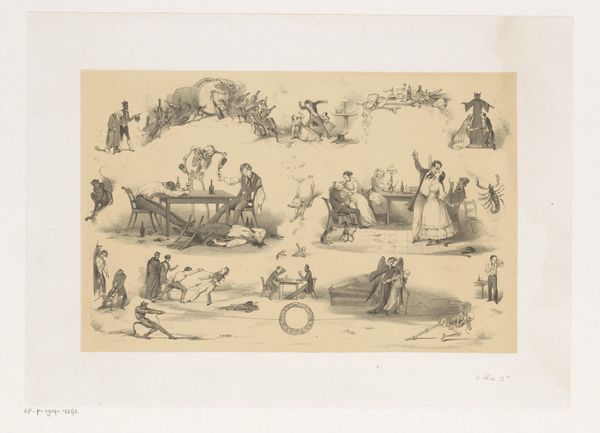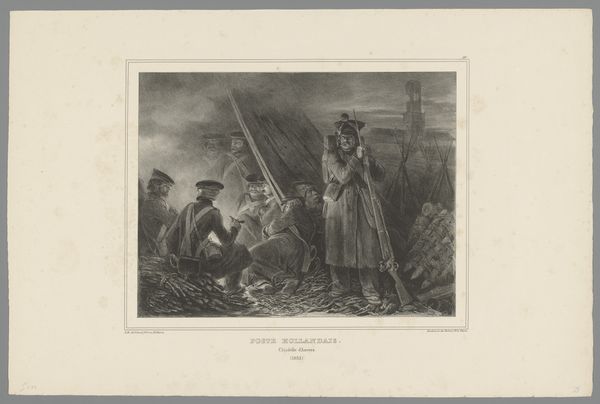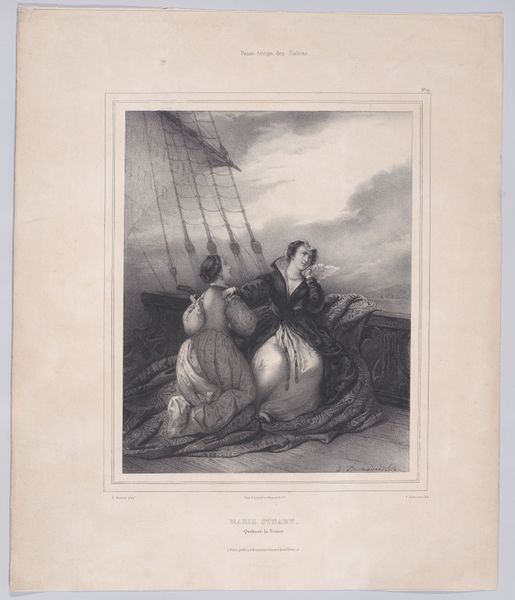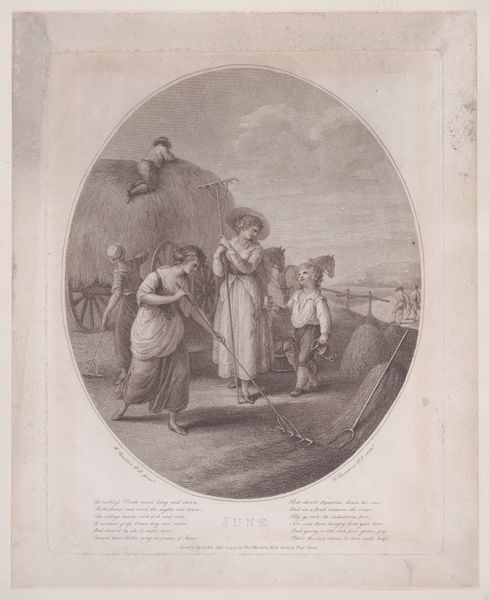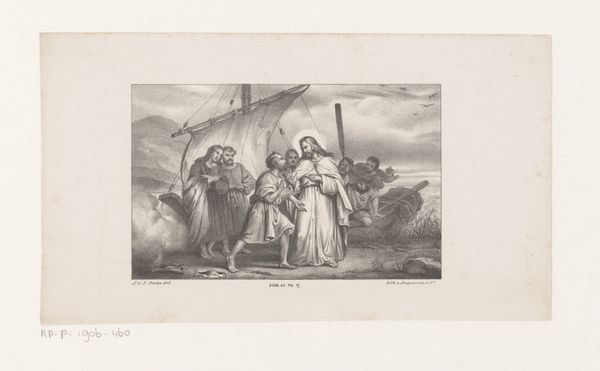
Allegories of Wisdom and Truth Leading the Infant Arts to America 1796
0:00
0:00
drawing, print, engraving
#
drawing
#
neoclacissism
#
allegory
#
narrative-art
# print
#
pencil drawing
#
history-painting
#
academic-art
#
engraving
Dimensions: sheet: 7 9/16 x 9 7/16 in. (19.2 x 24 cm)
Copyright: Public Domain
Editor: This is John James Barralet's "Allegories of Wisdom and Truth Leading the Infant Arts to America," a pencil and engraving work from 1796. It feels very staged, almost like a theater production. What do you see in this piece that draws your attention? Curator: Initially, I observe the neoclassical compositional structure. Notice the balanced arrangement of figures and objects within that quasi-circular frame. This engraving evidences a clear foreground, middle ground and implied background. Focus on the artist’s use of line; it defines the forms, creates textures and delineates spatial relationships within the picture plane. Editor: Can you tell me more about the use of line? Curator: Certainly. The delicate, precise lines, achieved through engraving, articulate details such as drapery folds and facial features, thus giving the figures their form. Also examine how line weight subtly shifts to create depth. Do you notice it? Editor: I do! So the sharpness creates contrast. That central grouping of figures in front is really highlighted. Why choose engraving for such a complex image? Curator: The reproductive nature of the engraving process is critical here. Prints allowed for wider dissemination of imagery, which was invaluable for propagating ideas during the Neoclassical period. In semiotic terms, we can read each element - the ship, the figures, the objects surrounding them, as a sign, each contributing to the artwork's wider discourse. It reinforces a reading of America as a land of burgeoning potential. Editor: That's fascinating. I hadn’t thought about the printmaking aspect as a way to spread the artwork's ideas and influence. Curator: Indeed. Through a formalist lens, we see how technique serves both aesthetic and intellectual purposes, reflecting the artist's conscious decisions in crafting this message. The composition, therefore, speaks of a calculated and rational design meant to instill the enlightenment vision of America’s future in its audiences. Editor: That makes me appreciate the artistry so much more!
Comments
No comments
Be the first to comment and join the conversation on the ultimate creative platform.
